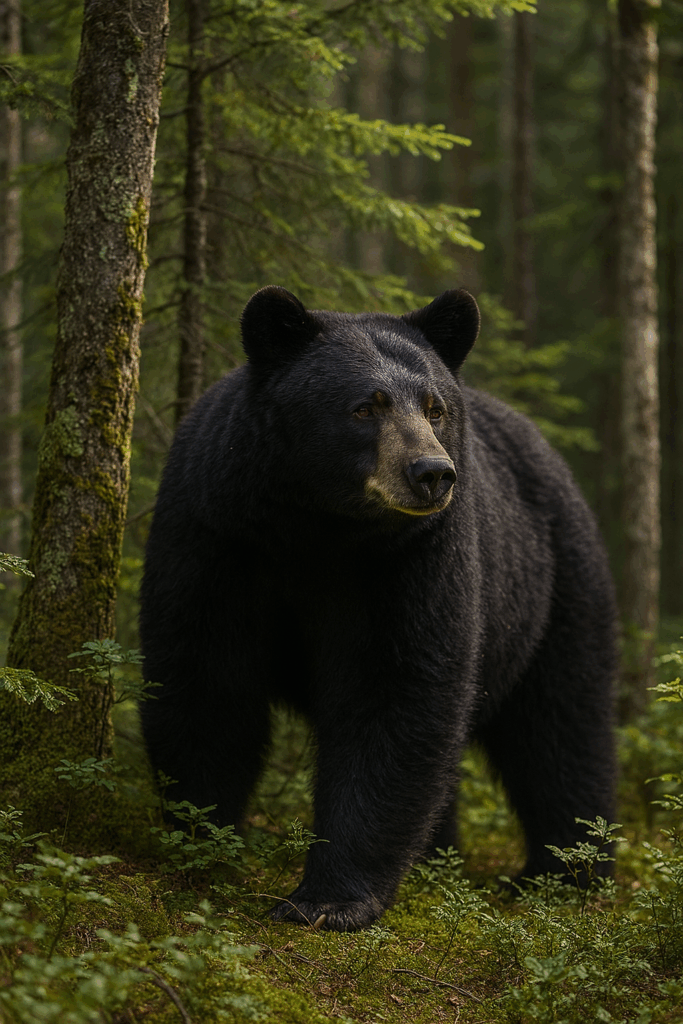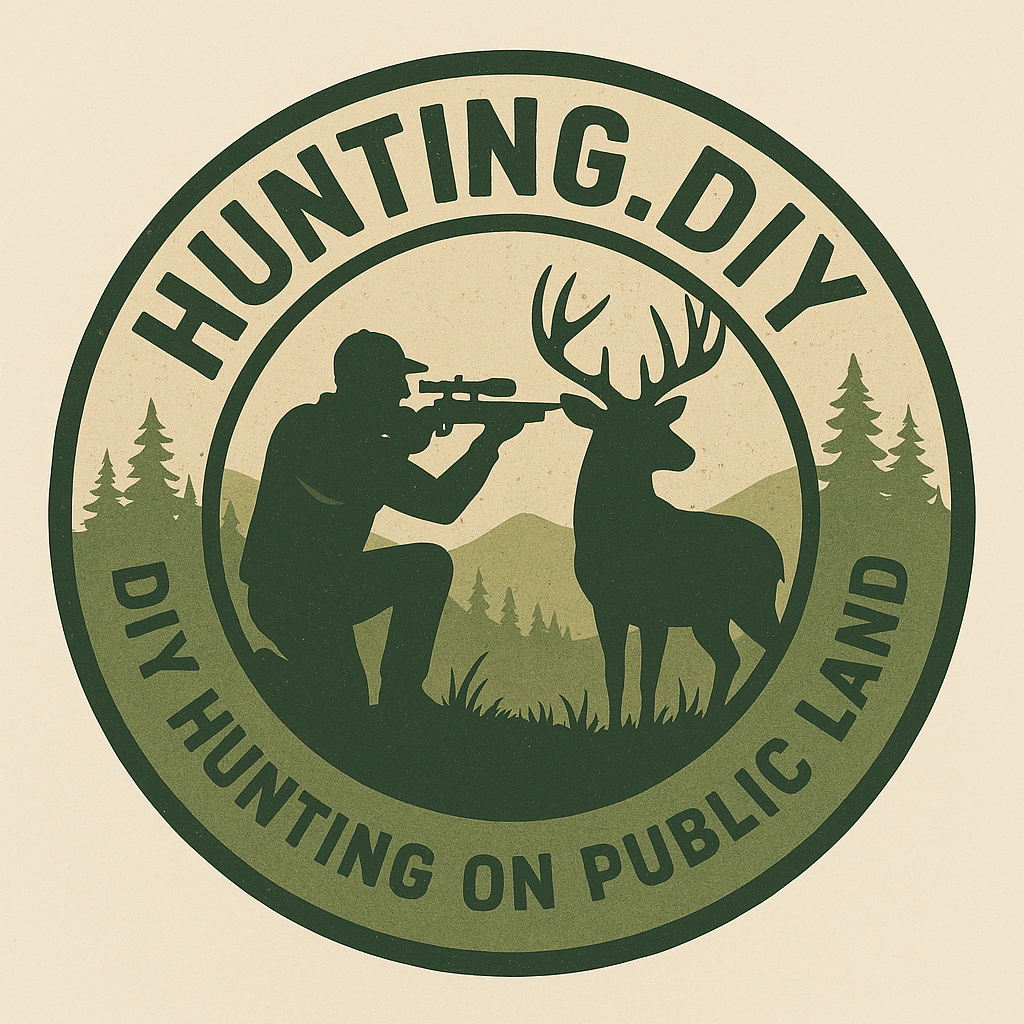Bear DIY Hunting Guide & Tips
Bear hunting guide: Whether you’re pursuing black bears in dense forests, stalking grizzlies in the wild north, or planning the ultimate polar bear adventure, this comprehensive bear hunting guide delivers expert strategies, gear recommendations, and essential safety tips to help you succeed in the field.

Species Classification
North America hosts three huntable bear species: the American black bear (Ursus americanus), the brown bear (grizzly bear; Ursus arctos horribilis), and the polar bear (Ursus maritimus). Black bears range coast to coast in forested habitat. Grizzlies concentrate in Alaska, Canada, and portions of the Northern Rockies. Polar bears are limited to Arctic coastal ice and tundra where they follow seal populations.
Physical Description
Black bears weigh 100–400 pounds, with compact bodies, straight facial profiles, and varied coats from jet black to cinnamon or blonde. Grizzlies tip the scales at 300–800 pounds, possess pronounced shoulder humps, concave facial profiles, and long, slightly curved claws. Polar bears are the largest, often exceeding 1,000 pounds; they have elongated necks, wedge-shaped heads, and dense white fur that camouflages on sea ice.
Distribution and Habitat
Black bears occupy deciduous and conifer forests from Mexico to Alaska. They frequent berry patches, hardwood mast stands, and riparian corridors. Grizzlies patrol alpine meadows, river valleys, and forest edges in interior mountain ranges. Polar bears roam pack ice and coastal barrier islands, following seal breathing holes and reefs.
Season Dates and Regulations
Bear seasons vary widely by state and province. Black bear hunts commonly open in late spring (May–June) and fall (August–October), with either a two-season split or a continuous fall season. Grizzly hunts are generally prohibited, limited to depredation control or limited Indigenous harvest. Polar bear hunts are federally managed under quota, limited to Inuit subsistence hunts with strict export controls under the Marine Mammal Protection Act. Hunters need specific bear licenses, often with separate tags for spring and fall.
Best Hunting States/Regions
- Black Bear: Pennsylvania’s northern forests, New York Adirondacks, Minnesota’s Superior National Forest, Colorado’s Western Slope, British Columbia
- Grizzly Bear: Alaska Interior, Montana’s Cabinet–Yaak, Yukon Territory
- Polar Bear: Northern Alaska (North Slope), Nunavut’s Kitikmeot Region
Hunting Equipment: Weapon and Ammo
Modern muzzleloaders (.50–.54 caliber) and shotguns with rifled slugs are popular for black bears in spring when antlerless deer regulations allow. For fall hunts and large bears, a .30-06, .300 Win Mag, or .338 caliber rifle with heavy, controlled-expansion bullets ensures adequate penetration on dense muscle and shoulder bone. Polar hunters use high-powered rifles (.375 H&H, .338 Lapua) at extended ranges on ice. Carry a stout handgun (.44 mag or larger) for close encounters and large-bore backup.
Hunting Methods and Techniques
Spring baiting with doughnuts, fish oils, and berry mash over barrel feeders or road snares draws black bears. Fall bait stations with corn and fermented fruit attract pre-hibernation fattening bears. Spot-and-stalk works in open basins where bears feed on sedges, roots, and spilled grain. Boat hunts along rivers flush bears feeding on spawning salmon. Polar bear hunts rely on snowmobile-based spot-and-stalk or hunting near seal breathing holes on sea ice.
Licenses and Tags
Black bear licenses often include a mandatory hunter education check-in, harvest reporting, and sometimes a mandatory draw for limited-entry units. Spring bear tags are separate from fall tags. Many jurisdictions cap fall tag numbers; bonus point systems and quotas regulate access. Polar bear hunts require federal export permits and coordination with local Indigenous authorities.
Diet and Feeding
Black bears are omnivores—spring shoots, forbs, and carrion; summer berries and insects; fall acorns, nuts, and grain. Grizzlies include significant meat—ungulate carrion, fish, and roots. Polar bears are hypercarnivorous, subsisting almost entirely on seal blubber and occasionally whale carcasses. Understanding seasonal feeding patterns helps set bait or plan spot-and-stalk locations.
Reproduction and Life Cycle
Black bears breed in June–July; delayed implantation leads to cubs born in winter dens in January–February. Litters average two cubs. Grizzlies follow similar cycles with smaller litter sizes. Polar bears mate in spring; cubs are born midwinter in snow dens on shorelines. Cubs remain with mothers for about two and a half years.
Population Status
Black bear populations are stable to increasing in much of their range due to habitat adaptation and robust forest management. Grizzly populations have rebounded in some recovery zones but remain threatened in the contiguous U.S. Polar bears face declines linked to sea-ice loss and climate change; populations are managed under international agreements.
Meat Quality and Processing
Bear meat can taste fishy or rancid if not bled and chilled properly, especially in spring due to fat composition. Dark red muscle, often lean, benefits from brining and slow cooking—stews, sausages, or ground mixes mask gaminess. Trim fat thoroughly, freeze quickly, and render fat for soap or cooking tallow after proper filtration.
Safety Considerations
Bear hunting carries high risk. Never approach downed animals; ensure absolute confirmation of a clean kill. Hunt with a partner, carry bear spray, and know defensive postures. Store bait and food securely to avoid habituating bears. In polar regions, monitor ice conditions and carry survival gear for frigid temperatures and thin ice.
Tracks and Sign
Black bear tracks show five toes in a semicircular arc with distinct claw marks; front prints are wider than hind. Look for overturned logs and claw marks on trees where they feed or scratch. Grizzlies leave larger, blocky tracks with deeper toe impressions and robust claw scrapes on banks and beds. Polar bear tracks in snow are larger, more widely spaced, with elongated stride lengths over ice.
Similar Species
Black bears can be mistaken for juvenile grizzlies—note the absence of a hump, smaller straight-faced profile, and shorter, curved claws. Polar bears may be confused with brown bears on shrinking sea ice—observe yellowish-white coat, longer neck, and narrow head shape. Misidentification can lead to hunting prohibited species or unsafe encounters.
